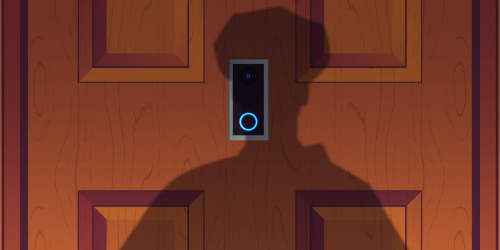In the days following the police shooting of Jacob Blake on August 23, 2020, hundreds of protestors marched in the streets of Kenosha, Wisconsin. Federal law enforcement, it turns out, collected location data on many of those protesters. The Bureau of Alcohol, Tobacco and Firearms (ATF) used a series of “geofence warrants” to force Google to hand over data on people who were in the vicinity of—but potentially as far as a football field away from—property damage incidents. These warrants, which police are increasingly using across the country, threaten the right to protest and violate the Fourth Amendment.
Geofence warrants require companies to provide information on every electronic device in a geographical area during a given time period. ATF used at least 12 geofence warrants issued to Google—the only company known to provide data in response to these warrants—to collect people’s location data during the Kenosha protests. The center of each geographic area was a suspected arson incident. However, the warrants reach broadly and require location data for long periods of time. One of the warrants encompassed a third of a major public park for a two-hour window during the protests. The ATF effectively threw a surveillance dragnet over many protesters, using “general warrants” that violate the Fourth Amendment and threaten the First Amendment right to protest free from government spying.
Police can use geofence warrants to collect information on and movements of innocent people at protests. This can include device information, account information, email addresses, phone numbers, and information on Google services used by the device owner, and the data can come from both Android and Apple devices. Someone who goes to a protest and happens to be nearby when a crime occurs may get caught up in a police investigation. Police in Minneapolis, for example, used a geofence warrant during the protests over the killing of George Floyd. The public only learned about it because the dragnet, centered around a property damage incident, caught an innocent bystander filming the protests, and Google notified him (which it doesn’t always do). The police can also use this data to create dossiers on activists and organizers.
In this way, geofence warrants also eliminate anonymity that people may rely on in order to protest or otherwise freely associate in public spaces. Law enforcement’s ability to catalogue the location of peaceful protestors will chill their exercise of their First Amendment rights. This is especially problematic when, as with the August 2020 protests in Kenosha, people are taking to the streets to hold the police themselves accountable.
Google recently published data showing that police have issued at least 20,000 warrants, just over the last three years, and the sheer volume of these warrants is increasing exponentially year over year. For example, California issued 209 geofence warrant requests in 2018, but in 2020, it issued nearly 2,000. Each warrant may result in the disclosure of information on tens or hundreds of devices. The vast majority of these warrants are issued by state and local police, which makes them difficult to track.
Google must start standing up for its users against this massive overreach. In addition to serious harms to privacy and free expression, geofence warrants operate without transparency. After years of pressure, Google has finally provided some limited data. But the vast majority of geofence warrants remain sealed, with no information from Google or law enforcement on their targets, geographic area and length of time, and their purported justifications. As a result, most people have no way of knowing whether they are caught up in one of these dragnets. Such uncertainty further chills the constitutional rights to freely protest and associate.













